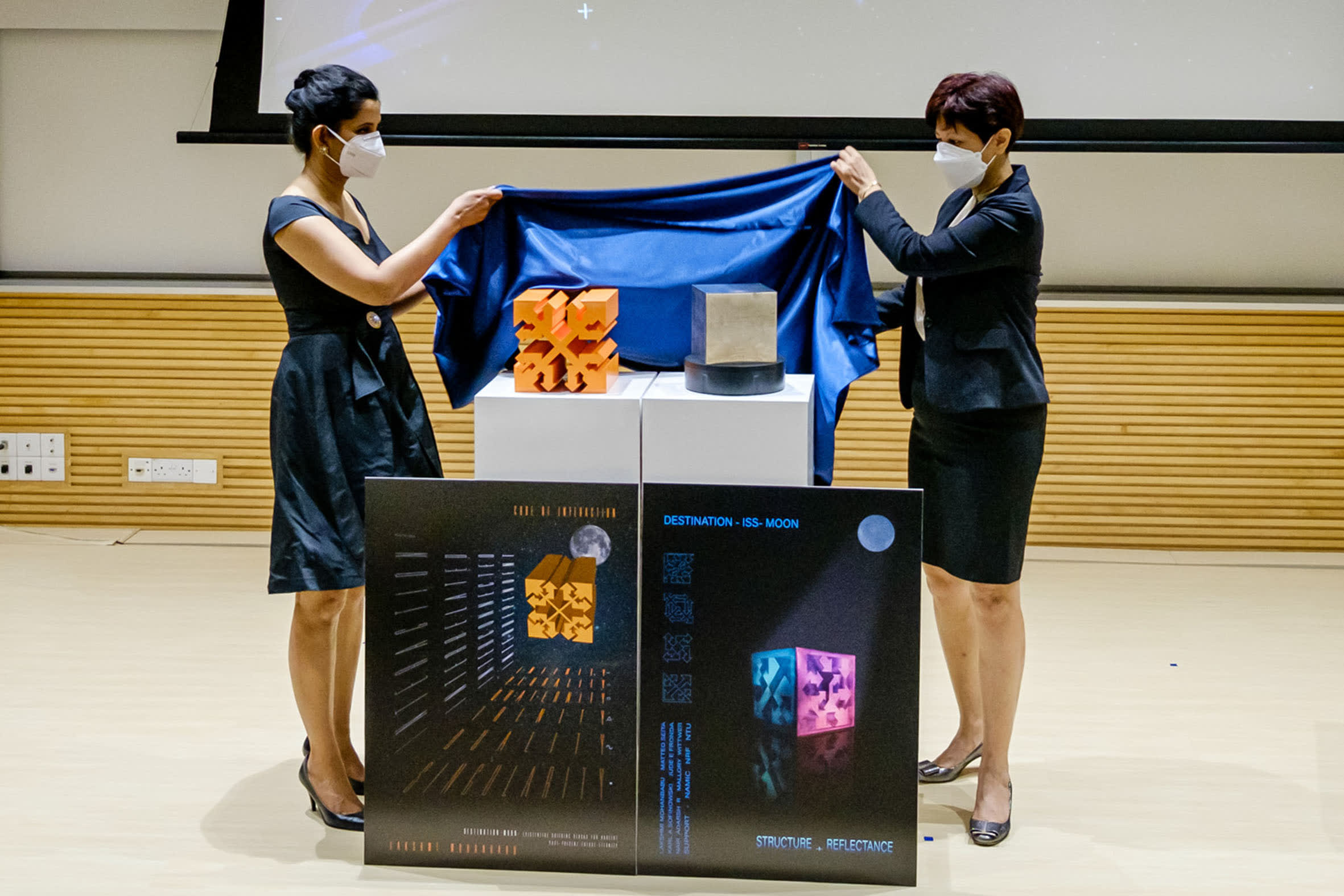SINGAPORE, March 15 — Two artworks by Singaporean artist Lakshmi Mohanbabu will be part of 100 art pieces to be permanently displayed on the moon in 2025.
The two art pieces, cube-like structures which measure less than 1 cubic centimetre, are part of art gallery Moon Gallery, which is currently orbiting Earth on the International Space Station (ISS).
The gallery will descend back to Earth in December 2022 and is slated to tour the world before heading to the moon in 2025.
Moon Gallery curator Anna Sitnikova envisions the gallery being the “cultural element” in a human settlement somewhere beyond Earth in the future.
The gallery aims to encourage people to explore how art and culture can influence the future of space exploration, she said during a ceremony on Monday (March 15) commemorating the two Singapore artworks in space.
The artworks were selected based on their significance and meaning, she added, although she was unable to provide the number of artwork applications received by the gallery.
The artworks also had to meet the National Aeronautics and Space Administration's requirements to be on the ISS, such as not being political or religious statements.
Sitnikova is one of four founders of the Moon Gallery Foundation, a non-profit cultural organisation based in the Netherlands to provide a platform for interdisciplinary and international cooperation.
In collaboration with Nanoracks — a commercial areospace company — the Moon Gallery sent 64 artworks, including Ms Lakshmi's pieces, to the ISS in February.
This is part of a test flight which will allow artists and scientists to understand how their artworks perform in space as they float within an 8cm by 8cm grid tray for 10 months, said Sitnikova.
Space cubes represent ‘everyone’
“I was really happy to be chosen by the Moon Gallery and to be part of such an interesting project... which hasn't been done before,” said Lakshmi.
Her artworks comprise two cubes designed to represent interdependence and unity.
The first cube, titled “The Cube of Interaction”, was created in collaboration with Nanyang Technological University (NTU) associate professor Daniel New.
Made of aluminum, the orange cube is designed like a blossoming flower, with arrows and waves which create “negative and positive space which defines each other”.
The second cube, titled “Structure and Reflectance”, was created in partnership with NTU associate professor Matteo Seita.
They used two different types of crystals to create a solid metal cube that reflects light differently.
Each side of the cube reveals a different universal symbol “which has connections to every part of the world, in every region, and to every group and race”, said Lakshmi.
For example, the cube has arrows that represent interactions between humans, a labyrinth-like design that signifies the “maze of life” and spirals which signify DNA.
While there are no confirmed plans for the artworks to be displayed in Singapore, Lakshmi said she hopes to have larger versions of her cubes placed in cities worldwide, “connecting space and the world to Singapore”.
The Moon Gallery Foundation is currently holding an open call for more artworks to be sent to the moon in the future. ― TODAY






















